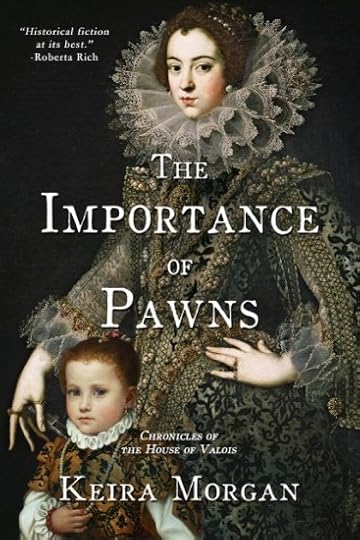Moniek Bloks's Blog, page 153
March 23, 2021
Dorothea of Courland – An empty marriage (Part two)
Charles Maurice de Talleyrand-Périgord, Prince of Benevento, had focussed all his attention on his nephew Count Edmond de Talleyrand-Périgord as his heir. And his heir needed a wife – preferably a rich one. It was probably Count Aleksander Batowski was hinted at Charles that Dorothea might be the woman for his nephew. Charles turned to Tsar Alexander, who was friendly with Dorothea’s mother, to ask her to give her daughter as wife to his nephew.
 Charles Maurice de Talleyrand-Périgord, Prince of Benevento (public domain)
Charles Maurice de Talleyrand-Périgord, Prince of Benevento (public domain)The Tsar and Dorothea’s mother talked for over two hours as she was most unhappy with the match. She placed her daughter’s preference for Prince Adam Czartoryski on the forefront and how she had no valid reason for stopping the match. The Tsar waved the Duchess’ concerns away. He told her, “At the age of fifteen, Dorothea is too young to have any fixed opinions of her own.”1 But apparently 15 wasn’t too young to be married! Eventually, the Duchess promised to do all she could to persuade Dorothea to agree to the match.
After much persuasion and intent on getting Dorothea to forget Prince Adam, Dorothea finally caught on to the plan to have her marry Edmond. Dorothea returned home for her mother’s birthday in November 1808 and was finally presented to him. She apparently barely slept that night. The following day, her mother officially told her of her promise to the Tsar and how Dorothea should consider “all the benefits which will accrue to your family from the match.”2 Dorothea snubbed her mother with the words, “But happily your situation is not so very bad that I must feel myself obliged to sacrifice what I have so long believed to represent my hopes of a happy future.”3 Dorothea had been ignored and neglected by her mother all her life, and she saw no need to help her now. The Duchess was incensed, but eventually, the two settled on Dorothea being polite to Edmond for the duration of the festivities so “it will at least appear that you are giving the proposal some serious thought.”4 In yet another betrayal of trust, Dorothea was then convinced that Prince Adam did not consider himself engaged to her and was, in fact, engaged to another.
A grieving Dorothea then announced to her mother that she was ready to marry anyone thought to be desirable – even Count Edmond. She then locked herself in her room and stayed there for the rest of the day – crying her eyes out. The following day – with her eyes still red from crying – she was left alone with Edmond. She told him, “I hope, sir, that you will be happy in this marriage which has been arranged for us. I must tell you, however, what you probably know already, that I am giving way to my mother’s wishes, not with actual repugnance it is true, but at least with the most complete indifference towards you. Perhaps I will be happy – I like to think so anyway – but I am sure you will understand my regrets at leaving my country and my friends and won’t resent the sorrow which I will feel, at first at any rate.” To which Edmond replied, “My God! I find that perfectly natural. For that matter, I am only marrying myself as to please my uncle. At my age, you know, it’s much more fun being a bachelor.”5 A promising start to a marriage, indeed.
On 22 April 1809, Dorothea married Edmond in Frankfurt in a Catholic ceremony. None of her three sisters was present as they were all anti-French. Within two days, Edmond had left his bride to rejoin the army in Austria. Dorothea set out for Paris where Napoleon’s star was still flying high. Dorothea and her mother initially stayed with Edmond’s uncle Charles at his mansion in the Rue de Varenne. After two weeks, they moved to Rosny, and Dorothea was only too pleased to be away from the Parisian society for now.
Peace was signed in October 1809, and Edmond returned to Paris, where Dorothea had also returned after six months in Rosny. He found her quite different from the quiet, skinny schoolgirl, and it appears she had a growth spurt. Now, her full emersion into the Parisian society could begin, and for the next two years, they were at almost every event on the social calendar. Initially wary of the society, Dorothea became delighted by it and quickly gained confidence. She was also appointed as one of the ladies-in-waiting to the new Empress – Marie Louise of Austria. However, she found the duties rather boring.
On 12 March 1811, Dorothea gave birth to her first child – a son named Napoleon-Louis – and both the Emperor and the Empress stood as godparents for the infant. By the end of the year, she was pregnant again and on 9 April 1812, she gave birth to a daughter – named Dorothea Charlotte Emilie. A third child – named Alexandre Edmond – was born on 15 December 1813. However, her marriage to Edmond was nothing but an empty shell, and he was more often away than he was at home – either at war, gambling or with other women. Meanwhile, Dorothea was growing closer to her uncle by marriage, Charles, who was nearly 40 years her senior.
Then came the rocky years of Napoleon’s downfall, second rise and ultimate demise. Charles told Dorothea to stay put at Rosny and blamed her absence on an illness following the birth of her third child, which was not entirely a lie. Charles – ever the statesman – had waited for this moment and welcomed Tsar Alexander of Russia as the conqueror of France. Only then, did he summon Dorothea from Rosny to share in the glory. The Bourbon family returned from exile and Charles was installed as their Minister for Foreign Affairs. During these years, Dorothea’s little daughter and namesake died of smallpox – leaving her devastated.6
Part three coming soon.
The post Dorothea of Courland – An empty marriage (Part two) appeared first on History of Royal Women.
March 21, 2021
Dorothea of Courland – A wealthy heiress (Part one)
On 21 August 1793, Princess Dorothea of Courland was born as the daughter of Dorothea von Medem, Duchess of Courland and Peter von Biron, the last Duke of Courland (in present-day Latvia). Or was she perhaps the daughter of Count Aleksander Batowski? No one knows for sure, but she was recognised by the Duke as his daughter. He was 69 and bordering on senile. Dorothea had five siblings, of which three sisters survived to adulthood.
Dorothea spent her early years in Sagan, and she saw little of the man who recognised her as his daughter. The age difference between Dorothea and her siblings was quite significant. She was ten years younger than her third sister. In her early childhood, her three elder sisters often spent the summers with their father while Dorothea remained with her mother. Dorothea was only six years old when her father died on 13 January 1800. Dorothea and her sisters were now the wealthiest heiresses in Europe. Meanwhile, her mother had moved onto another lover by the name of Gustave Maurice, Baron d’Armfeld, who took it upon himself to see to the marriages of her three elder sisters. Dorothea later wrote, “My whole family was under the spell of this Baron d’Armfeld; so fatal to the tranquillity of all those whom he called his friends. He ruled our domestic life despotically…”1
The eldest sister Wilhelmina had inherited the title of Duchess of Sagan, but her proposed match to Louis Ferdinand, Prince of Prussia fell through, leaving Wilhelmina very disappointed. She threw herself into an unhappy match with Prince Louis de Rohan-Guémenée, a French émigre, which ended in divorce five years later. The second sister Pauline married Frederick Hermann, Prince of Hohenzollern-Hechingen and although he was a much better catch than Louis de Rohan, Pauline was not any happier. The third sister Jeanne eloped at the age of 16 with the music-master, a German man named Arnold. However, she was tracked down and brought back to her family under protest. The music-master was eventually arrested, and he died (or was executed) in prison just a few days later. In March 1801, Jeanne married Francis Pignatelli of Belmonte, Duke of Acerenze to save her from future scandal.
Meanwhile, the young Dorothea was entrusted to the care of an English governess. She was a brutal woman who beat Dorothea and even forced her to run naked outside during the winter. There was little actual educating going on. Dorothea later wrote, “Sad almost to the point of melancholia, I remember perfectly how I longed to die…”2 Her unexpected saviour came in the form of the Baron d’Armfeld whom she had disliked, but he saw the deficiency in her education and knew she had more in her. Within weeks, she was able to read, and she was asking for more. Finally, her mother began to take an interest in Dorothea, and two tutors were appointed for her. Dorothea began to read everything she could get her hands on – in English, German or French.
On 15 April 1808, Dorothea was confirmed in the St Nicolas church in Berlin. Being rather non-religious, Dorothea later wrote, “The future seemed to unveil itself before me at the moment the pastor, having invoked for me the blessing of the Most High, declared me a member of the Faithful. I understood that my entry into adult life meant that I would be called on to fight, to struggle fiercely, rather than to follow the happy and brilliant career which everything seemed to promise me…”3 Her mother promised her a separate household in Saxony and the freedom to go to Berlin in the winter. Dorothea was now 15 years old, and her mother wanted to get rid of her.
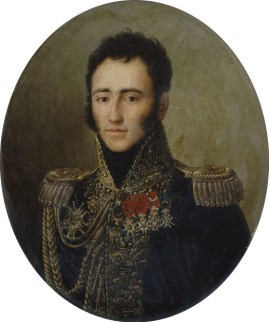 Edmond de Talleyrand-Périgord (public domain)
Edmond de Talleyrand-Périgord (public domain)Dorothea already had her eye on a potential husband – Prince Adam Czartoryski. The dashing Prince had been taken as a hostage to Russia, and he had been appointed as Grand Duke Alexander’s aide-de-camp as a reward for good behaviour. When Alexander became Tsar in 1801, he suddenly found himself nominated as Minister of Foreign Affairs. He left Alexander’s service in 1806, and his thoughts had turned to marriage as well. Dorothea had never even met Prince Adam, but she had heard the stories. They finally met in de spring of 1807, but her mother was quite dependent on the Russian Emperor, and he and Prince Adam hadn’t exactly left things on good terms. Several more suitors came calling, but none charmed her as much as Prince Adam.
Things changed when Tsar Alexander came to dinner in October 1807 with a man named Count Edmond de Talleyrand-Périgord in his entourage. He was the heir of his uncle Charles Maurice de Talleyrand-Périgord, Prince of Benevento, who until recently had been Minister of Foreign Affairs for Emperor Napoleon.4
Part two coming soon.
The post Dorothea of Courland – A wealthy heiress (Part one) appeared first on History of Royal Women.
March 19, 2021
Book News April 2021
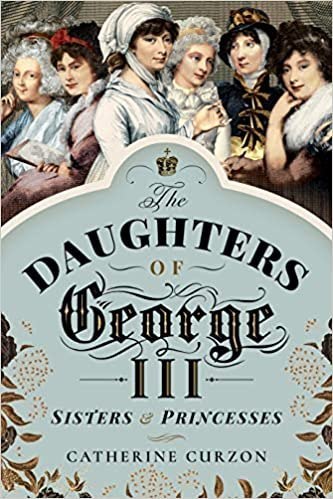
The Daughters of George III: Sisters and Princesses
Paperback – 28 February 2021 (UK) & 28 April 2021 (US)
In the dying years of the 18th century, the corridors of Windsor echoed to the footsteps of six princesses. They were Charlotte, Augusta, Elizabeth, Mary, Sophia, and Amelia, the daughters of King George III and Queen Charlotte of Mecklenburg-Strelitz. Though more than fifteen years divided the births of the eldest sister from the youngest, these princesses all shared a longing for escape. Faced with their father’s illness and their mother’s dominance, for all but one a life away from the seclusion of the royal household seemed like an unobtainable dream. The six daughters of George III were raised to be young ladies and each in her time was one of the most eligible women in the world. Tutored in the arts of royal womanhood, they were trained from infancy in the skills vial to a regal wife but as the king’s illness ravaged him, husbands and opportunities slipped away. Yet even in isolation, the lives of the princesses were filled with incident. From secret romances to dashing equerries, rumours of pregnancy, clandestine marriage and even a run-in with Napoleon, each princess was the leading lady in her own story, whether tragic or inspirational. In The Royal Nunnery: Daughters of George III, take a wander through the hallways of the royal palaces, where the king’s endless ravings echo deep into the night and his daughters strive to be recognised not just as princesses, but as women too.

Tea with Hitler: The Secret History of the Royal Family and the Third Reich
Hardcover – 15 April 2021 (UK) & Unknown (US)
Queen Victoria dreamt that her Coburg dynasty would unite Europe in an extended family network via a series of dynastic marriages. Her eldest daughter, Vicky, married the future German Emperor in 1855, and by the time Victoria died in 1901, six of her eight children had married German royals, and her 42 grandchildren resided in palaces and castles across the continent. Victoria hoped this soft power would safeguard peace and foster constitutional government based on the British model. Never again would Europe be torn apart by power-mad dictators such as Napoleon Bonaparte. However, Victoria’s high-handedness, the arrogance and stupidity of her grandchildren, including the peculiarities of Kaiser Wilhelm, and the aggressive German nationalism of the 20th Century put paid to her vision of a united Europe. In Tea with Hitler, author Dean Palmer pulls together for the first time all the individual stories to provide the complete picture of the fractured Saxe-Coburg-Gotha family during wartime.

Cleopatra: The Queen Who Challenged Rome and Conquered Eternity
Hardcover – 23 March 2021 (US) & 29 April 2021 (UK)
Cleopatra focuses on a twenty-year period that marked a sweeping change in Roman history, beginning with the assassination of Julius Caesar that led to the end of the Republic, and ending with the suicides of Antony and Cleopatra and the birth of the Augustan Empire. Angela brings the people, stories, customs, and traditions of this fascinating period alive as he transports us to the chaotic streets of the capital of the ancient world, the exotic port of Alexandria in Egypt, and to the bloody battlefields where an empire was won and lost.
Meticulously researched and rich with vivid detail, this sweeping history, reminiscent of the works of Simon Schama, Mary Beard’s SPQR, and Tom Holland’s Rubicon, recreates this remarkable era and the woman at its turbulent center.

Town & Country: The Queen: A Life in Pictures
Hardcover – 6 April 2021 (US) & 12 April 2021 (UK)
Since she succeeded to the throne in 1952, Queen Elizabeth II has become respected, celebrated, and beloved around the world. This stunning collection of powerful images illustrates her storied reign in all its glory.
More than 300 extraordinary photographs, along with insightful commentary by the royal journalist Victoria Murphy, showcase the significant, historic, and intimate moments throughout the Queen’s life, first as a young princess and then as the longest-reigning British monarch.
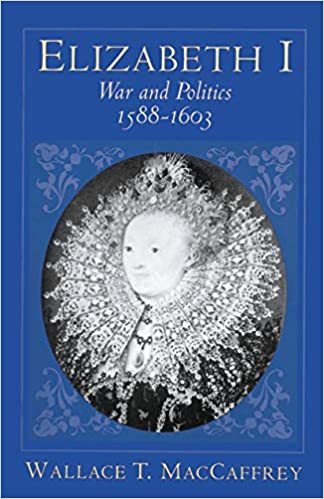
Elizabeth I: War and Politics, 1588-1603
Kindle Edition – 13 April 2021 (US & UK)
MacCaffrey completes his analysis by investigating how Elizabeth and her ministers governed in the years between the Armada of 1588 and her death in 1603. In light of the Queen’s desire to uphold her popularity through the maintenance of peace and prosperity, the author explains why she pursued war with Spain by only half-measures and how the brutal conquest of Ulster and the destruction of Tyrone came to be seen as prerequisites for the incorporation of Northern Ireland.
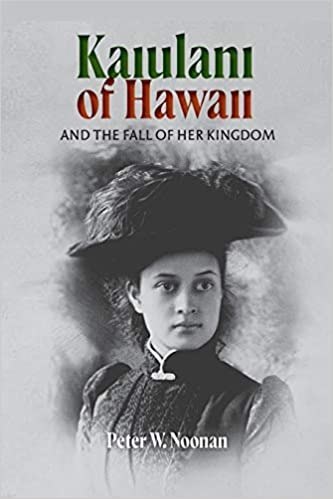
Kaiulani of Hawaii: And The Fall Of Her Kingdom
Paperback – 1 April 2021 (US & UK)
In the nineteenth century Hawaii achieved a widely recognized status as an independent state but it was unable to retain its independence. The loss of Hawaii’s independence followed changes in US foreign policy, and a local coup d’état that was supported by the US Navy and Marines, which set Hawaii on a course towards inclusion in a new American Pacific Empire. But the last Crown Princess of the Kingdom, seventeen year old Princess Victoria Kaiulani, who was a student in England when the crisis broke struggled against the annexation of her country. She travelled to America to try and influence American public opinion, and she met with the President of the United States to bear witness to the tragedy that had befallen Hawaii. Her poignant pleas for her country touched the conscience of many, and her actions helped to foil Hawaii’s immediate annexation, giving her country a brief reprieve from the loss of its national sovereignty. Later, after Hawaii was absorbed by the United States, she strove to ensure that indigenous Hawaiians would be able secure their political rights as US citizens, before she suffered an early death at the age of twenty-three.
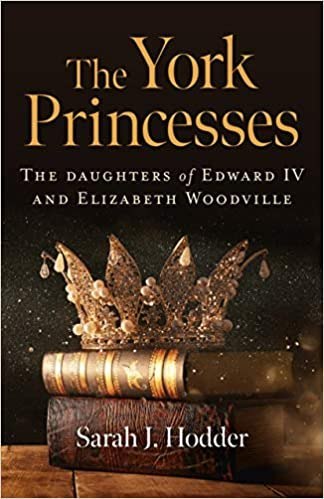
The York Princesses: The Daughters of Edward IV and Elizabeth Woodville
Paperback – 1 May 2021 (US) & 30 April 2021 (UK)
As a collective, the lives of the Princesses of York span across seven decades and the rule of five different Kings. The daughters of Edward IV and Elizabeth Woodville, they were born into an England that had been ruled over by the great Plantagenet Kings for almost three hundred years. Their young years were blighted by tragedy: the death of their beloved father, followed by the disappearance and possible murder of their two brothers, Edward and Richard of York, forever now known to history as the infamous Princes in the Tower. With their own futures uncertain during the reign of their uncle, Richard III, and their mother held under house arrest, the Princesses had to navigate their way through the tumultuous years of the 1480s before having to adjust to a new King and a new dynasty in the shape of Henry VII, who would bring about the age of the Tudors. Through her marriage to Henry, Elizabeth of York rebuilt her life, establishing herself as a popular, if not hugely influential Queen. But she did not forget her younger siblings, and even before her own mother’s death, she acted as a surrogate mother to the younger York princesses, supporting them both financially and emotionally. The stories of the York Princesses are entwined into the fabric of the history of England, as they grew up, survived and even thrived in the new Tudor age. Their lives are played out against a backdrop of coronations and jousts, births and deaths, marriages and divorces and loyalties and broken allegiances. From the usurpation of Richard III, to the Battle of Bosworth, the brilliance of the court of Catherine of Aragon and Henry VIII, to the rise of Anne Boleyn, the York Princesses were there to witness events unfold. They were the daughters, sisters and aunts of Kings, and this is their story. The York Princesses is a natural follow-up to Sarah J. Hodder’s first book, The Queen’s Sisters, which told the stories of the lives of the sisters of Elizabeth Woodville.
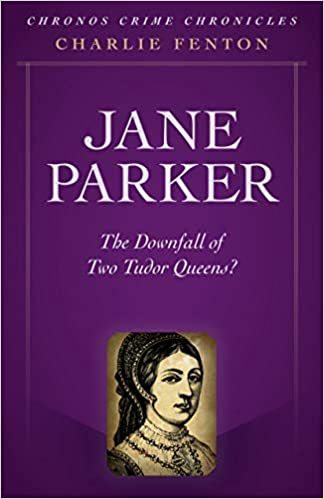
Chronos Crime Chronicles – Jane Parker: The Downfall Of Two Tudor Queens?
Paperback – 1 May 2021 (US) & 30 April 2021 (UK)
Jane Parker, later Viscountess Rochford, was the sister-in-law of Anne Boleyn and was executed alongside Katherine Howard, yet she has remained in the shadows throughout the years, surrounded by more myths than facts. She is often portrayed as a malicious woman who was jealous of her husband’s relationship with his sister, but the evidence does not support that. So why is she portrayed as such? It may be the ambiguous nature of her dealings with Henry VIII’s fifth queen, Katherine Howard, that have influenced our view of her, but her real story deserves to be told in full. Jane Parker: The Downfall of Two Tudor Queens? is the next instalment in an exciting new historical true crime series from Chronos Books.

Princess Olga of Yugoslavia: Her Life and Times
Hardcover – 1 April 2021 (UK & US)
Often called the ‘most royal Princess in Europe’, Olga’s life is imbued with drama from the outset: Taken ‘hostage’ by her Romanov grandmother, she is further traumatised by the assassination of her grandfather, the King of Greece, followed by a humiliating Swiss exile and being cast aside by a future Danish king.
The post Book News April 2021 appeared first on History of Royal Women.
March 18, 2021
The Top Ten Royal and Aristocratic Memoirs
This article was written by Carol.
Royal memoirs have been a popular genre for a long time. Perhaps the earliest were those of Marguerite of Valois (1553-1615) and La Grande Mademoiselle of France (1627-1693). Royal memoirs were most prolific during the period between and after the two World Wars when many displaced aristocrats needed income. During the 1970s and 1980s, I amassed a decent collection by scouring the second-hand bookshops. A few years ago, downsizing caused me to decide it was time for them to find new homes. But here is my memory of the Top 10 Royal Memoirs from my collection.
10. For a King’s Love – Queen Alexandra of Yugoslavia
Princess Alexandra (1921-1993), the child of a morganatic marriage of the Greek King, marries the King of Yugoslavia for love. It all goes south pretty quickly.
9. The Last Grand Duchess – Grand Duchess Olga Alexandrovna
In an “as told to” version, Olga (1882-1960), the younger sister of Tsar Nicholas, looks back 60 years and reminisces on life at the Imperial Court before the revolution. She shares her views on her mother (difficult), sister-in-law (kind and misunderstood), and Rasputin (helpful but disturbing). She describes how she ended up in a cottage in a suburb of Toronto, where she was visited by various members of the British Royal family during the 1950s.
8. My Own Affairs – Princess Louise of Belgium
An unhappy marriage at the age of 17, an uncaring father, and a strict head of her husband’s family (Emperor Franz Joseph of Austria) cause Louise (1858-1924) to leave her husband for her lover. Their life together was difficult, including his imprisonment for forgery and her forced internment in a mental asylum (from which she escapes). Here she states her case and settles a few scores.
7. My Past – Countess Marie Larisch
Countess Larisch (1858-1940), a niece to Empress Sisi and cousin to Crown Prince Rudolf of Austria, attempts to justify her actions during the Mayerling affair, leading to her expulsion from the Austrian Court. A second book, Secrets of a Royal House, spills more salacious details.
6. My Memories of Six Reigns – Princess Marie Louise
Princess Marie-Louise (1872-1956), a granddaughter of Queen Victoria, married a Prince of Anhalt. The marriage was annulled within a few years. She returned home in 1900 and was an active member of the British royal family. Her respectful memoirs, published in the 1950s, was one of the first books to give an insider’s look at life in the Royal family.
5. My Story – Louisa of Tuscany
The Crown Princess of Saxony (1870-1947) gives her side of the story of her marriage to and escape from the Court of Saxony. Spoiler alert: a rotten father-in-law who threatened to lock her up in an asylum.
4. Education of a Princess – Grand Duchess Maria Pavlovna
Another Romanoff memoir. Maria (1890-1958) and her brother Dimitri are raised by Grand Duke Serge and his wife Ella (sister to the Empress) when their mother dies, and their father is exiled for marrying without the consent of the Tsar. Related to the Greek, Danish and Russian royal families (she is a first cousin of Prince Philip), this is an absorbing look at life in Russia before and after the revolution, including her time at the Swedish court during a short-lived marriage, Dimitri’s involvement in Rasputin’s murder, and her escape from Russia. A companion volume, A Princess in Exile, carries her life story further to her time in Paris after the first world war.
3. The Journey – Cecilia Sternberg
Cecilia (1908-1983), a member of the European aristocracy, marries a Bohemian Count and becomes the mistress of two castles and a palace in Vienna. Forced out with only what they can carry as the communists take over Czechoslovakia, they must remake their life. Her husband’s idea is to live in the Ritz of Paris and just keep charging everything to the room. Eventually, they end up in a Florida motel room, working in a restaurant and selling her handmade pottery. Interesting to note that in more recent years, their daughter Diana Phipps was able to reclaim their castle in the Czech Republic.
2. Memories of Madame de la Tour de la Pin
Another member of the aristocracy this should be sub-titled “I was there.” Lucie Dillon (1770-1853), daughter of Viscount Dillon and a French aristocrat, was at Versailles with Marie Antoinette, escaped from the terror in Bordeaux, was visited by Talleyrand at her farm in upstate New York, and hosted Napoleon as wife to the Ambassador to The Hague. (Did I mention she was related to Josephine through her father’s second marriage?) A fascinating eye witness account of this period of history although with a sad ending as she ekes out an existence in her later years. (Hence the very long memoir for which she was probably paid by the word.) A biography, Dancing to the Precipice, which includes extracts from the memoirs and places them in their historical context, was published by Caroline Moorehead in 2009.
1. Daisy, Princess of Pless – by Herself
Princess Daisy (1873-1943), the Diana, Princess of Wales of her day, was an early target of the paparazzi. A noted society beauty, she was the daughter of Colonel Cornwallis-West and sister-in-law to Jenny Churchill and the Duke of Westminster. She marries the wealthy Prince of Pless of Silesia and enters the stiff and formal life of the Prussian aristocracy. A confidant of both King Edward and Kaiser Wilhelm, she is devastated when Germany declares war on her beloved England. A tale of a glittering pre-war life and the stress of divided loyalties during the war. Like many of these women, her last years were spent in poverty.
The genre remains popular to this day, witness Queen Noor’s 2003 Leap of Faith and Anne Glenconner’s 2020 surprisingly interesting contribution, Lady-in-Waiting: My Extraordinary Life in the Shadow of the Crown. The biggest bestseller in this category however surely must be 1992’s Diana: Her true story which is based on taped interviews with Diana, Princess of Wales.
And be sure to check out History of Royal Women’s page: Books written by Royal Women, for other Royal memoirs.
The post The Top Ten Royal and Aristocratic Memoirs appeared first on History of Royal Women.
March 16, 2021
A look at Princess Mabel of Orange-Nassau
Mabel Martine Los was born to Hendrik Los and Florence Kooman in Pijnacker, Netherlands, on 11 August 1968. Mabel has three sisters – two of whom (Nicoline and Eveline) are from her mother’s second marriage. Her father, Hendrik, passed away when she was just nine-years-old from a skating accident, and her mother later remarried to Peter Wisse Smit in 1984. Mabel and her sister chose to take their stepfather’s surname because they were quite young when their father died. Due to her mother’s remarriage, Mabel and her siblings were raised in Het Gooi, Netherlands.
The Dutch Royal Family has not shared Mabel’s early education, but it is known that she graduated cum laude with a degree in economics and political science from the University of Amsterdam in 1993. In 2001, she attended the International Human Rights Law Summer School at the University of Oxford, and in 2008, she attended Harvard University’s John F. Kennedy School of Government’s Global Leadership and Public Policy for the 21st Century executive education programme in Boston.
During her time at the University of Amsterdam, she became deeply interested in human rights, Balkan diplomacy, and international relations. During her university years, she also interned at the United Nations, Shell, ABN AMRO, and the Ministry of Foreign Affairs.
Her passion for human rights led to her founding the European Action Council for Peace in the Balkans in 1994; she held the director position in this organisation until 1997, when she started working at the Open Society Foundations. While there, she was initially the director of the Brussels office until she was named International Advocacy Director, based in London. In 1995, Mabel assisted in creating WarChild Netherlands and later helped create the NGO coalition Publish What You Pay and the International Criminal Court in 2002.
From 2008 through 2012, Mabel was the first director of The Elders – an organisation created by Nobel Peace Prize winner and former South African president Nelson Mandela to bring together non-governmental public figures to promote peace, human rights, and justice. In 2011, Princess Mabel initiated Girls Not Brides: The Global Partnership to End Child Marriages.
Mabel met Prince Friso – the second son of then-reigning Queen Beatrix of the Netherlands – in Brussels in 2000. Their engagement announcement came in 2003, but it was not without controversy. The couple were vague about Mabel’s connection to the Dutch drug lord, Klaas Bruinsma, and Prince Friso admitted in a letter to then-Prime Minister Jan Peter Balkenende that he and Mabel had given incomplete – but not inaccurate – information. Mabel’s relationship with Bruinsma was close but not romantic. As a result, the couple chose not to seek parliamentary approval for their marriage – meaning Friso was removed from the line of succession. Shortly before marriage, he was granted the surname “of Oranje-Nassau, van Amsberg” and the hereditary title “Count of Orange-Nassau.”
Embed from Getty ImagesFriso and Mabel married on 24 April 2004 in Delft, Netherlands, and moved to London. Their first child, Countess Luana, was born on 26 March 2005, and their second child, Countess Zaria, was born on 18 June 2006.
Embed from Getty ImagesOn 17 February 2012, Prince Friso was buried by an avalanche while on holiday in Lech, Austria, with the Royal Family. He was deprived of oxygen for 25 minutes before he was rescued and resuscitated but remained comatose.
Embed from Getty ImagesHe was moved to Wellington Hospital in London, close to their family home in March, where Mabel remained by his side. In July 2013, Friso was transferred to Huis ten Bosch Palace in The Hague, Netherlands. At the time, it was said that he had some consciousness; Friso spent his final month surrounded by his family. On 12 August 2013, Prince Friso died at the age of 44.
Embed from Getty ImagesMabel and her two daughters continue to live in London. She continues her active role in human rights initiatives and honours her husband’s memory each year at the Prince Friso Engineering Prize.
Embed from Getty ImagesThe post A look at Princess Mabel of Orange-Nassau appeared first on History of Royal Women.
March 14, 2021
Judith of Flanders – Countess and Duchess
This article was written by Carol.
Judith of Flanders was the daughter of Baldwin IV, Count of Flanders and his second wife, a daughter of the Duke of Normandy. Baldwin was thirty years older than his wife. Judith was born around 1031. Judith’s father died just a few years later in 1035, and she was raised at the Flanders court of her much older half-brother, Baldwin V, with her niece Matilda, who was close in age. Matilda would go on to marry the Duke of Normandy and become Queen of England in 1066. Judith is sometimes mistakenly mentioned as Matilda’s sister.
Baldwin V arranged Judith’s first marriage to Tostig Godwinson, a younger son of the powerful Earl Godwin of England. At the time of her marriage, Edward the Confessor was on the throne of England, and he was married to Tostig’s sister Edith. No doubt this was considered a respectable but not a spectacular marriage. Judith and Tostig sailed off to England and immediately ran into trouble. In Dover, during their wedding celebrations, a brawl sprang up between the Count of Boulogne and the men of Dover. In a test of wills and power, King Edward ordered Earl Godwin to punish the people of Dover; he refused. Edward won the day, and Godwin and his family were exiled from England.
Tostig and Judith and the rest of the Godwins were back in Bruges with her brother. Luckily their exile did not last long. The following year they returned to England, and Tostiq was soon made Earl of Northumbria. Now Judith had a more powerful position with wealth and status.
Two similar stories come down to us from Judith’s time in England. A monk of Durham Priory stated that she was aggressive about wanting to enter the Shrine of St. Cuthbert at Durham, even though women were prohibited. She sent her maid to go in first to “test the waters” and the maid was struck down by a gust of wind. Another apocryphal tale is told around St. Oswin. In this case, Judith supposedly asked for a relic from St. Oswin. She was given some hairs from his head. She then proceeded to test their veracity by trying to burn them. When the hairs failed to burn, proving a miracle, she was struck down by a force of wind. In both cases, Judith comes across as pious but pushy.
Tostig’s reputation in Northumbria was much worse. In 1065, the local lords rebelled against him. King Edward sent Tostig’s brother Harold to negotiate with the rebels. Harold ended up agreeing with the Northumbrians, and Tostig and Judith were exiled. Whatever brotherly relationship they had ended at that point.
Judith and Tostig once again had to pack up and go back to Judith’s brother in Flanders, but soon after King Edward died and Tostig’s brother Harold claimed the English throne. Tostig, still nursing his grudge, began stirring up trouble. Perhaps he thought he too could be King of England? He harried along the south coast and then went up to Scotland looking for support. Eventually, he teamed up with Harald of Norway who had an actual claim to the throne. Brother Harold went racing north and met up with Tostig and Harald of Norway at Stamford Bridge. Both Tostig and Harald were killed. Some sources say it was Harold himself who killed his brother.
That left Judith a widow in Bruges. (If she had any children with Tostig they have disappeared from the historical record). Baldwin V died in1067, and without her brother’s support, Judith could see she needed a new husband. She was soon negotiating with Welf of Ravensburg.
Welf’s father was the founder of the Este family in Italy. His mother was the sister of Welf III of Bavaria and he inherited his uncle’s property in 1055. At the time of their marriage in late 1070, the situation in Flanders was unstable. The new Count of Flanders was a boy of 15, in danger of losing his inheritance to his uncle. (He did in February 1071). Welf, for his part, had just sided with the Emperor against the Duke of Bavaria, repudiated his wife who was that Duke’s sister, and about to be named the new Duke of Bavaria, which he was at Christmas 1070. To Judith, it must have seemed like a smart choice to leave Flanders for Bavaria.
Unfortunately, Welf was unable to hold on to this title. He backed the wrong side during a fight between the Pope and the Emperor and lost his title in 1077. Welf’s new allies, however, were the other southern Dukes and for a while it appeared that he might be the next King of Germany. These hopes, too, were dashed. Judith’s title was Lady of Ravensburg for the rest of her life, although Welf did become Duke of Bavaria again after her death. More than once however Judith shows up in local Bavarian records as “Queen of England”. Perhaps there was some misunderstanding about her former husband that she did not clarify.
Judith and Welf had three children. Her son Welf was married to Matilda of Tuscany for a short period of time.
Judith’s legacy lives on, however, through gifts she provided to her local cathedral Weingarten Abbey. Four gospel books commissioned by Judith, richly illuminated and once covered in jewels, survive. Two are now housed at the Pierpont Morgan Library in New York. One she gave as a gift to the Empress Agnes when they were trying to find favour with the Emperor and is now located at Monte Cassino. And the fourth is in Fulda, Germany. She is also credited with having given a relic of the holy blood to Weingarten Abbey. Weingarten celebrates the gift of the Holy Blood each year and the summer festival, the Welfenfest, features a local girl dressed as Judith.
She died in 1094 and was buried at Weingarten Abbey.1
The post Judith of Flanders – Countess and Duchess appeared first on History of Royal Women.
March 11, 2021
Claude of France – Beloved and Successful Queen of France
This article was written by Keira Morgan.
Although Queen Claude of France was beloved and successful when she lived, history has not treated her kindly. She is better remembered as the mother of seven, wife of King Francis I of France or daughter of King Louis XII France and Queen Anne, Duchess of Brittany, than as herself. Yet there is more to her than this.
Princess Claude’s Early Life
Born 13 October 1499, only 10 months after the marriage of her parents, both her mother and father were delighted that she was strong and healthy. Because Queen Anne had lost so many previous children, she invoked St. Claudius of Besançon for a living child. Thus, she named Claude after the saint.
As a child, Claude lived in the Château of Blois served by her own staff under the watchful eye of her governante, Madame de Tournon. A merry child, her parents doted on her. She enchanted her father, and he delighted to take her hunting. She had one sister, Renée, born in October 1510.
Betrothals and Marriage
Determined to keep Brittany separate from the French crown, Queen Anne wanted to marry Claude to Charles, Duke of Luxembourg. She believed he could keep Brittany safe from France. Thinking they would soon have a son, King Louis agreed at first.
In 1501, ambassadors for the Duke of Burgundy and King Louis signed the marriage contract. In 1504, King Louis and Duke Philip renewed the betrothal. Claude’s dowry included the Duchies of Brittany, Milan and Burgundy, the Counties of Blois and Asti, the Republic of Genoa and Queen Anne’s remaining lands in France. With this extravagant dowry, Habsburg lands would have surrounded France.
As soon as King Louis XII fell ill and feared death, he signed a secret document cancelling the betrothal. Instead, he betrothed Claude to his heir, Francis. After he recovered, despite Queen Anne’s opposition, he called the Estates-General to Tours and formalized the betrothal.
When her mother died in January 1514, Claude became Duchess of Brittany. Four months later, she married Francis.
Claude of France’s Public Functions
On 1 January 1515, King Louis died, and Francis succeeded him as King and Claude became Queen. Despite her title, Claude only nominally fulfilled the role of first lady since her mother-in-law held political power and the King’s mistresses kept him company.
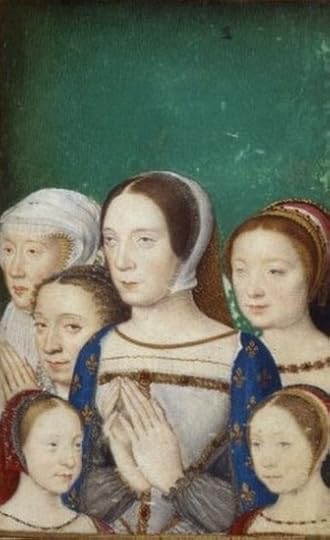 L-R: Eleanor of Austria (Francis’ second wife), Claude’s daughter Charlotte, Claude’s sister Renee, Claude herself, Claude’s daughters Madeleine (Queen of Scots) and Margaret (Duchess of Savoy) (public domain)
L-R: Eleanor of Austria (Francis’ second wife), Claude’s daughter Charlotte, Claude’s sister Renee, Claude herself, Claude’s daughters Madeleine (Queen of Scots) and Margaret (Duchess of Savoy) (public domain)Yet Claude was an extremely successful Queen. Most importantly, she was a notable producer of heirs — giving France seven living children, of whom three were sons. It must have been a relief given her mother’s repeated tragedies.
The second critical function of Queens was ceremonial. Brought up royal, Claude was trained to the role and was popular with the French. Although her coronation was delayed until 1517, it was magnificent. It was held on 10 May at the Basilica of St. Denis, and Queen Claude rode through the Paris streets the next day at her official Entrée with the people of the city cheering her wildly.
In 1518, when France and England allied, Francis and Claude attended the public betrothal in Paris of their infant son, the Dauphin Francis, to Princess Mary, the only legitimate child of King Henry VIII of England.
In June 1520, Queen Claude accompanied King Francis to the elaborate but hollow Field of Cloth of Gold. Already over seven months pregnant, she fulfilled her ceremonial duties, hosting feasts, dances, and events for their royal guests. This included hosting King Henry VIII at a banquet in the French camp, while Queen Catherine hosted King Francis in the English camp.
Despite King Francis’ notorious infidelity, he held his wife in high regard. He delighted in his many children and insisted everyone treat her with respect. When she attended court functions, he and she always presided together.
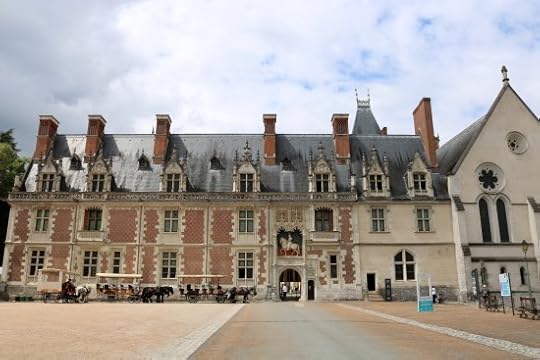 Château of Blois – Photo by Moniek Bloks
Château of Blois – Photo by Moniek BloksWhen Queen Claude died on 20 July 1524 at Blois – aged only 24, he was heartbroken. He said to his sister, “If I could buy her life with mine, I would do it with all my heart. Never would I have believed that the bond of matrimony enjoined by God would be so firm and so difficult to break.”
 Tomb of Francis and Claude at the Basilica of St. Denis – Photo by Moniek BloksQueen Claude’s Role in Religious Reform
Tomb of Francis and Claude at the Basilica of St. Denis – Photo by Moniek BloksQueen Claude’s Role in Religious ReformIn the early years of the 16th century, early proponents of church reform had strong connections to the French court. Claude grew to adulthood during this time, and important women in her life, including her sister-in-law Marguerite and Michelle de Soubise, professed reformed beliefs. There is evidence Queen Claude shared these views.
Her two main public contributions to the reform included overseeing the reconstruction of the parish church of Saint-Solenne and the rebuilding of the Augustinian convent of St. Jean of Blois for the ‘Véroniques’ nuns. She also employed a reformist confessor and permitted the publication in Nantes, the capital of her Duchy of Brittany, of the reformist writing of Jean Gerson.
Appearance versus Personality
Claude was labelled as plain and short. She had inherited her mother’s hip deformity, leaving her with one short leg. Afflicted with scoliosis, her hunched back worsened with age and constant pregnancies. With each pregnancy, she became fatter. Foreign ambassadors noted her obesity, limp, squint, small stature, and plain face, but they admired her many excellent qualities.
Brantôme says, “… Madame Claude of France … was very good and very charitable, and very gentle to all, never doing any unkindness or harm to anyone either at her court or in the kingdom.”1
How Influential was Queen Claude of France?
Consensus reigns among those as diverse as the Venetian ambassadors, Anne Boleyn, private letter writers and the Abbé de Brantôme. The French people, members of the court, and her family loved the Queen. Even her unfaithful husband bitterly mourned her loss.
I believe Queen Claude was much more influential than we know. In my novel, The Importance of Pawns, she is the heroine.2
The post Claude of France – Beloved and Successful Queen of France appeared first on History of Royal Women.
March 9, 2021
A look at the life of Crown Princess Kiko of Japan
Kiko Kawashima was born on 11 September 1966 in Shizuoka Saiseikai General Hospital in Suga-ku, Shizuoka, Japan, to Tatsuhiko Kawashima and Kazuyo Sugimoto. The family relocated to Philadelphia, Pennsylvania, USA, the following year for her father to attend the famous Ivy League school, the University of Pennsylvania. The family would later become a family of four when Kiko’s younger brother was born.
Kiko was educated in the United States until the age of six before returning to Japan for a period. Upon moving back to Japan in 1972, the future royal attended several elementary schools including Nakada Elementary School and Shinjuku Ward Waseda Elementary School. She studied in Austria while her father worked as the chief researcher at The International Institute for Applied Systems Analysis for two years in the late 1970s. As a result of living abroad, Kiko speaks English and German in addition to her native Japanese.
Kiko’s family returned to Japan in 1979 where she attended Gakushuin Girls’ Junior and Senior High School; while there, she was active in the welfare committee where she raised money for those with disabilities and leprosy. She entered university in 1985 to study psychology at Gakushuin University where she graduated in 1989 with her bachelor’s degree. She went on to receive a master’s degree in the subject in 1995 from the university before obtaining a PhD in psychology from Ochanomizu University in 2013.
It was while studying at university that she met her prince in the school’s library. In June 1986, Prince Fumihito proposed, but their engagement was not announced for three years. Officials in the Imperial Household disapproved of the match as Kiko did not come from a wealthy family, and Fumihito’s grandmother, Empress Dowager Nagako was against the union to who people called the “apartment princess.”
Embed from Getty ImagesThe Imperial Household Council announced Fumihito was engaged to a commoner on 12 September 1989. Their official engagement ceremony wasn’t held until the one year mourning period had concluded for Emperor Hirohito who died on 7 January 1989. The “Nosai no Gi” (engagement ceremony) was held on 12 January 1990, and their wedding followed on 29 June 1990 at the Imperial Palace in Tokyo. The public celebrated the royal wedding and the “Cinderella story” of Kiko.
Embed from Getty ImagesFumihito and Kiko’s first child, Princess Mako was born on 23 October 1991, and their second daughter, Princess Kako followed on 29 December 1994.
Princess Kiko continued her studies after getting married and having children. She also learned Japanese sign language and focuses on helping those in the deaf community in her charity work. Her daughters have followed in her footsteps in this regard.
She holds several patronages and honorary positions including being a reserve member of the Imperial Household Council, patron of the Japan Anti-Tuberculosis Association, and Honorary Vice-President of the Japanese Red Cross Society, among others.
Embed from Getty ImagesTwelve years after having Princess Kako, Fumihito and Kiko had their third child – Japan’s longed-for son and heir. Prince Hisahito was born on 6 September 2006 when Kiko was almost 40. Hisahito is the only grandson of Emperor Emeritus Akihito, and as women are not allowed to succeed to the Japanese throne, his birth was met with celebration as Japan’s line of succession was uncertain. It delayed talks with the Japanese government on a change in the laws to allow women to ascend the throne; these talks have begun to circulate again now that Fumihito’s brother, Naruhito is on the throne.
Embed from Getty ImagesOn 30 April 2019, Emperor Akihito abdicated the throne, and the following day, Naruhito became Emperor of Japan. This elevated Fumihito to Crown Prince, making Kiko the Crown Princess. The official ceremony “Rikkōshi-Senmei-no-gi” to declare Fumihito as heir to the throne took place in November 2020.
The Crown Prince and Crown Princess travel across the globe on behalf of the Imperial Family and have attended important events like state funerals of their European counterparts and toured countries to strengthen diplomatic relations between those nations and Japan.
Embed from Getty ImagesIf Kiko’s husband ascends the throne as expected, she will one day be the Empress of Japan and the mother to the future Emperor of Japan – forever holding a central and important role in the Imperial Family and Japanese history.
The post A look at the life of Crown Princess Kiko of Japan appeared first on History of Royal Women.
March 8, 2021
The Year of the Duchess of Windsor – The move to Château de Candé
The future Duchess of Windsor had left England at the beginning of December 1936 just as the British press began to write about the crisis. She had called her friends Herman and Katherine Rogers, who lived in Cannes and asked to stay with them. However, in early March, it was time to move on and begin to plan for the future with the now abdicated King. It was Herman Rogers who introduced her to Charles Bedaux who owned an old château named Candé, near Tours.
It was surrounded by a large wooded park, which would guarantee their privacy. Wallis discussed the idea with the Duke, and Herman asked Charles if he had any skeletons in his closet as the press would certainly find them and the couple could not afford any embarrassment. Even King George VI was consulted, and with royal approval, Charles officially lent them the Château de Candé.
On 1 March 1937, Wallis wrote to Charles’ wife Fern, “It is frightfully difficult for me to convey even one-tenth of what I feel about your and Mr Bedaux’s kindness and generosity to the Duke of Windsor and myself. When we meet perhaps, I can make you realise a little of it. I am so looking forward to our arrival at Candé the ninth, and I hope you will not have a shock at the size of the caravan. I am afraid I must warn you that if our move is detected before my arrival, you may have an awful struggle with the press.”1
To her aunt Bessie she wrote, “You can imagine our excitement here with the big move scheduled for Monday, all the secret arrangements etc re the van for the luggage etc. We hope to be safe from the press until Tuesday at least.”2
With the date of her divorce being final approaching, the press was beginning to return the gates of the Rogers’ villa. On 9 March 1937, Wallis, the Rogers, and 27 pieces of luggage left Cannes for Tours. She arrived during a terrible storm, but her first impression of the château was favourable. Wallis was to take Fern’s bedroom while Herman Rogers slept in an adjoining with a gun under his pillow. He still feared for her safety.
Embed from Getty ImagesEmbed from Getty ImagesEmbed from Getty ImagesFor the next two months, Wallis was at Candé waiting to be joined by the Duke. As before, the press had begun to gather around the château. She later wrote, “I never could understand why newspapers went to the expense of keeping presumably competent and useful men at such an empty task.”3
At the beginning of May, Wallis and the Duke were reunited at Candé and the following month; it would be the scene of their wedding. The château is now open to the public.
The post The Year of the Duchess of Windsor – The move to Château de Candé appeared first on History of Royal Women.
March 7, 2021
Marie Angélique de Scorailles – Wounded in the king’s service
Marie Angélique de Scorailles was born in July 1661 to parents Jean Rigal de Scorraille, who was the King’s lieutenant, and his wife, Aimée Eléonore de Plas. Angélique was born into an old aristocratic family and was raised in a Château in Auvergne, but as was the case with many ancient families, the family had prestige but little money.
Angélique was noted as a beauty even as a young child, and in order to try to regain the family’s fortune, a plan was formulated to send Angélique to court and dangle her in front of the King of France. Angélique’s family pooled their resources and had the finest wardrobe made up for her before packing the seventeen-year-old off. Angélique became Maid of Honour to Elisabeth Charlotte, Duchess of Orléans and her time was spent between a number of palaces; Fontainebleau, Saint-Germain and Versailles, which was undergoing extensive building work.
At this time, King Louis XIV had a wife and was involved with two mistresses. The first was his long-term official mistress Athénaïs, Madame de Montespan who had been with the king for over a decade and had seven children with him, but in this period their physical relationship had begun to wane. The second was Françoise, Madame de Maintenon. Françoise and the King had grown close as she was the governess of his and Madame de Montespan’s children and she loved the children dearly. The pair cared for each other but were not intimate at this stage. During this time, the two women were at logger-heads for the King’s affections, and they were both surprised to find the King suddenly infatuated with somebody else.
The new girl at court – Angélique who was just 17 – was said to be the most beautiful woman at Versailles, and everyone raved about her looks. Even her rival Athénaïs declared her to look exactly like a statue. An ambassador said she “had an air to astonish and charm” and the Duchess of Orléans called her “as lovely as an angel, from head to foot.” When the king saw Angélique, he fell for her immediately and pursued her. The 40-year-old monarch was always having flings, but with Angélique, he fell in love.
Before long everyone at court knew that Angélique and the King were an item. The King, who had become less exciting and extravagant in the years before, suddenly began to host balls and ballets again and the court buzzed with activity. Whatever dazzling outfit Angélique wore, Louis was seen in matching ribbons and decked in feathers and diamonds as in his youth. The beauty and zest for life shown by the young Angélique seemed to re-invigorate King Louis XIV, who had started to mellow with age. For a time Angélique was all everyone talked about; her fashions were copied, everyone wanted to talk to her, and the King was head over heels. One day when out hunting, a branch became stuck in Angélique’s hair, loosening her ribbon and curls, within days the new style was being mimicked by every lady at court…apart from Athénaïs who by now had realised that the new mistress was a real threat to her position.
Angélique had re-awoken Louis’ libido which, though he had frequent affairs, had suffered in the years before, by then even the experienced Athénaïs could do little to please the King in this way. The King could not get enough of Angélique and showered her with gifts and compliments. Soon Angélique was seen being driven by a coach and eight horses which was a gift from the King, Athénaïs had only ever had six horses! The rivalry between the two became more public when one-day Athénaïs unleashed two pet bears on the new mistress’ Versailles apartment in order to destroy it. Eventually, though Athénaïs quietened down in order to keep at least the title of Maîtresse-en-titre, it was reported that she said to Madame de Maintenon, “the King has three mistresses, that young hussy performs the actual functions of a mistress, I hold the title, and you hold the heart.”
For a while, Angélique rose swiftly through the ranks at Versailles and was adored by the King despite her flaws which were becoming obvious to everyone else. After getting past the stunning looks of the young woman, it seemed there was little else to her; she had little in the way of wit or charm and was not said to be clever or a conversationalist, in fact, quite the opposite. One courtier called her “as stupid as a basket” and apparently as soon as she opened her mouth to talk, people stopped swooning over her. Madame de Caylus penned that “the King was embarrassed by her foolish chatter” and went on to say that one does not grow accustomed to stupidity.
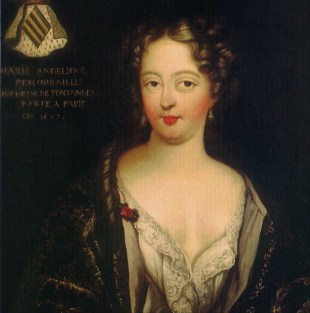 (Public domain – posthumous portrait)
(Public domain – posthumous portrait)As was common for a young mistress, it was not long before Angélique became pregnant. As a consequence of the pregnancy and dwindling sexual relations, Louis finally grew tired of Angélique. She gave birth to a sadly stillborn boy in January 1680. Following this, Angélique was granted the title of Duchess of Fontanges and was awarded a substantial yearly pension. This, of course, could be seen as a sign of Louis’ favour, but it was also a way he liked to end a relationship, with a grandiose departing gift. The new Duchess’ families wish had been granted, and her family were given a much-needed boost financially, but Angélique was heartbroken at the relationship coming to an end and was still very unwell after her son’s birth.
In order to recover, Angélique left court with her sisters and her staff and headed to the Abbey of Chelles. Courtiers gossiped about her terrible appearance; she was still losing blood after the loss of her child and looked paler by the day. It was also believed that the Duchess was suffering from lung disease, and there was little of her spark and beauty left to be seen. Madame de Sévigné wrote that “it was pitiful to see, that great beauty losing all her blood, pale, changed, overwhelmed with sorrow and despising the 40,000 ecus annual pension…wishing for her health and the heart of the king which she has lost.” Other courtiers were less caring and mocked Angélique for being “wounded in the king’s service.”
There are stories that King Louis XIV visited Angélique at the Abbey as she suffered from a terrible fever one night. Louis supposedly wept by her bedside, though this is unlikely to be true, even if King Louis was becoming a more religious and caring man under the guidance of Madame de Maintenon. Angélique never returned from the Abbey and endured a painful death aged just nineteen.
It is unclear what exactly killed Angélique, many sources say problems relating to childbirth, others say lung disease, and then there are also rumours that Angélique was poisoned by Madame de Montespan. Whatever the cause, Versailles had lost an innocent soul and after this King Louis XIV began to mellow in his later years and settled with the pious Madame de Maintenon, whom he later married. A posthumous portrait of the Duchess of Fontanges was commissioned, and each year, a service was held in memory of the young Duchess, paid for by the King who must have felt in some way responsible for her death.1
The post Marie Angélique de Scorailles – Wounded in the king’s service appeared first on History of Royal Women.

